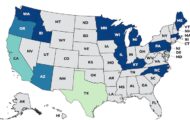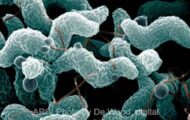We’ve all heard the stories, or perhaps we’ve lived the story, of how the close quarters on an airplane can make you sick. In that closed-off environment, cold and flu germs easily travel directly from one person to another. And if your immune system is at all weakened, the odds that you are going to get sick increase. (By the way, the air on airplanes is well-filtered and quite sanitary, thanks to fresh air that is constantly drawn into the plane and pressurized, passed through HEPA filters, and refreshed 20 times an hour. The air on an airplane is not likely to make you sick.)
Did you know there are other, more ominous, sources of bacteria and viruses on airplanes? How about your tray table? Have you ever heard of a “fomite”? As it turns out, the air on the plane is the least of your worries.
Fomites are defined as inanimate materials and objects that can carry and transmit bacteria. In other words, every surface on the plane. And the advice to wash your hands before you eat and after you use the bathroom, while still sound, isn’t going to solve the problem while you’re in the air.
The airline water supply can be contaminated with coliform (fecal) bacteria and E. coli. In fact, in 2004 the EPA said that passengers in high risk groups should not drink beverages that are mixed or brewed on flights. By 2008, fewer than half of the airliners who were ordered to test their water had complied.
The Problem
The tray table, seat arms, seat back, armrests, the pocket that holds in-flight magazines, the magazine itself, and your complimentary pillow, are all likely contaminated with some potentially dangerous bacteria and viruses.
A study conducted in 2007 by Jonathan Sexton at the University of Arizona found that 60% of the tray tables on an airplane contain Methicillin-resistant Staphylococcus Auerus (MRSA, the superbug that hospitals fight daily). And non-porous surfaces, such as doorknobs and seat belts, transmit bacteria and viruses more efficiently than porous materials such as paper towels and cloths, simply because the porous materials absorb and trap the bugs.
Many flights have very short turnaround times, which is the time between passengers disembarking and passengers boarding the plane. Some are as little as 30 minutes. That leaves little time for disinfecting surfaces. Some airlines don’t use cleaning services, but rely on flight attendants and pilots to clean the cabin. Wiping down every fomite with disinfectant in 30 minutes is impossible.
And bacteria and viruses can survive on fomites for a surprisingly long period of time.
- Enteric viruses, such as rotovirus, can remain infective on fomites for 2 months.
- RSV and the influenza virus remain viable on fomites for several hours, up to several days.
- Gram-positive bacteria, such as MRSA, can survive on fomites for months.
- Gram-negative bacteria, such as E. coli and Salmonella, survive for an even longer period of time than gram-positive bacteria
- Airlines say that they deep-clean their planes once a month. Southwest performs what they call a “light deep-cleanse” twice a week. There are no federal regulations that require airlines to disinfect tray tables, seats, blankets, pillows, or floors.
What About the Kitchen?
Galley kitchens on airplanes are mainly used to reheat the food, which is prepared by large catering facilities. In 2009, FDA inspectors cited many of these catering companies for health and sanitation violations. These violations included:
- Raw meats were not cooked to safe final temperatures
- Food was stored at improper temperatures
- Food not properly stored was not discarded
- Equipment not cleaned
- Workers did not practice proper hygiene
- Workers handled the food with bare hands
- Cockroaches, mice, and flies were found at some facilities
These conditions will cause food poisoning outbreaks. In fact, in 2004, 116 passengers were sickened after eating food on flights catered by Gate Gourmet, the second-largest catering operator that provides airlines with food. The catering companies have denied these charges and violations.
Since those reports, the FDA is issuing fewer warning letters to airline caterers. But that may be because the airlines are serving fewer fresh meals and are relying on pre-packaged foods that are shelf-stable and less likely to be contaminated. Some airlines are no longer offering in-flight meals.
But even if the food you’re served is perfectly wholesome and prepared properly, that tray table and other fomites on the plane can get you into trouble.
What You Can Do
If you are flying, you need to take responsibility for the cleanliness of your personal space. Here’s what to do:
- Bring disinfectant wipes and hand sanitzer. And use them.
- Wipe down your tray table, the seat and armrests before you sit down and get comfortable.
- Clean your hands after you clean the surfaces around you.
- Avoid touching seat backs when you walk up and down the aisle. Avoid reading the in-flight magazine too.
- Always use the wipes and sanitizer after you use the restroom and before you eat.
- Request bottled water, or buy it after you have cleared security. Don’t have ice put in your drink.
- A face mask isn’t going to help with fomite contamination. Airplane air is less contaminated than the air in your office, and is recirculated more frequently. And that mask will become contaminated as you touch the surfaces of the plane and adjust the mask.




